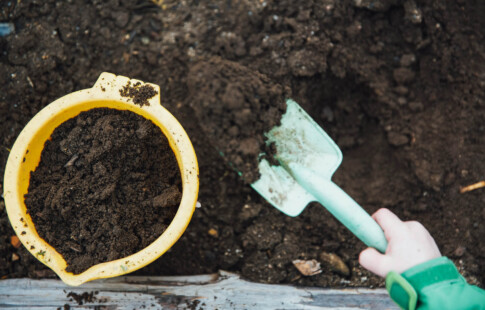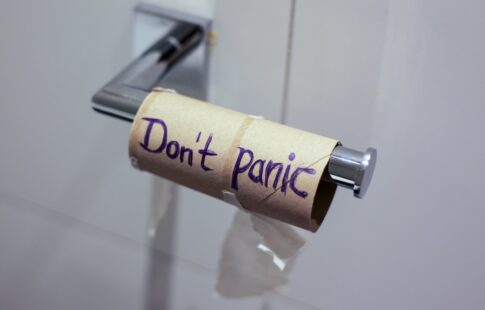
8 Homesteading Equipment to Prioritize for Sustainable Off-Grid Living
We are reader-supported. When you buy through links on our site, we may earn affiliate commission.
Embarking on an off-grid living situation is an exciting journey toward self-sufficiency, sustainability and a deeper connection with nature. Thriving in this lifestyle requires the right homesteading equipment that empowers you to live independently while minimizing your reliance on outside resources.
Discover the top eight tools and gear every homesteader must have to become more self-sufficient while minimizing environmental impact.
1. Solar Power Systems
Homesteading without a source of electrical power can result in various inconveniences for you, your family and any livestock on your property. The best option is a reliable solar power system. In addition to utilizing renewable energy, these configurations drastically reduce your spending on fossil fuels, thereby saving you money and promoting sustainability.

Explore different setups, from small portable panels for charging devices to larger systems that can power entire homesteading operations. A typical solar panel system can generate between 250 to 400 watts per panel. Learn about battery storage options to ensure you have energy even on cloudy days. Tesla is coming out with some new batteries, but they are quite expensive. Still, they’re worth considering if you want to enjoy year-round uninterrupted power supply.
Get this 1300Wh portable solar power station on Amazon.
2. Water Collection and Filtration Systems
Making the most of the available water supply is crucial to sustainable off-grid living. If you live in an area with relatively regular rainfall, a collection and filtration system can be a great way to utilize precipitation for everyday needs.
A key aspect of this setup is the size of your roof — the larger it is, the more water you can capture. Experts estimate rainwater harvesting systems can collect up to 60 gallons of water per inch of rainfall for every 1,000 square feet of roof area. Pair this with a high-quality filtration system to improve water security on your homestead.
3. Multi-Functional Gardening Tools
True homesteading means cultivating your own food. For that, you’ll need high-quality gardening tools that serve multiple purposes—like a garden hoe that doubles as a rake. Another example is the Hori Hori knife, which combines a trowel and a serrated edge for digging and cutting roots, making it an invaluable tool for gardeners.
The idea is to utilize a single piece of homesteading equipment across various applications and still get a good outcome. This approach minimizes your overall storage and maintenance requirements.
4. Composting Systems
Installing composting systems around your property introduces circular economics to your off-grid living situation. A typical homestead has abundant organic waste like animal manure, kitchen scraps and yard debris — all of which can be converted into nutrient-rich compost. These applications significantly improve soil health, leading to healthier plants and increased crop yields.
This practice enables a closed-loop system where waste becomes a resource perpetually, promoting sustainable self-sufficiency. Additionally, composting reduces the need for chemical fertilizers, which can be costly and harmful to the environment.
5. Portable Cooking Equipment

Depending on the size of your homestead, you might need equipment that lets you whip up meals anywhere. Cooking off-grid doesn’t mean sacrificing quality or flavor. Explore options like portable solar ovens, rocket stoves and propane grills that allow you to prepare delicious meals using minimal resources.
6. Emergency Preparedness Gear
Living off the grid means preparing for unexpected challenges—natural catastrophes or equipment failures. This comprehensive emergency kit by Ready America includes first aid supplies, multi-tools, fire-starters and water purification tablets.
FEMA reports that nearly 50% of Americans are unprepared for disasters, but the risks may be greater for homesteaders given the remoteness of their locations. Accessing professional medical services during emergencies may take a while, so knowing how to keep yourself alive until help arrives is key.
7. Communication and Security
Homesteading is an exciting adventure but presents communication and security challenges. Satellite phones or long-range two-way radios help facilitate coordination among family members and workers, especially across large or remote areas without regular cell services.
Security is equally vital when living off-grid. You might need to protect your property from intruders and wild animals. Investing in security cameras, motion sensors, livestock tags and other measures can be highly beneficial.
8. Mushroom Growing Kit
If you have space, growing mushrooms on your homestead can be a great way to enhance food security and make some extra income. For instance, dried morel mushrooms can sell for $160 per pound in grocery stores — serious profit potential for someone who knows what they’re doing.
Get an all-in-one mushroom growing kit to supplement your finances and food supply while homesteading.
Essential Skills for Sustainable Off-Grid Living
While having the right homesteading equipment is vital, you must also have the core skills necessary to live and thrive off the grid. These include:
- Gardening: Understanding how to grow food effectively can significantly reduce your grocery bills and ensure a steady fresh produce supply. Learn about soil health, crop rotation, and organic pest control methods to enhance your gardening success.
- Animal husbandry: If you plan to raise livestock, whether for food or companionship, knowledge about animal care, breeding and health management is crucial. Familiarize yourself with different breeds and their specific needs to create a thriving environment for your animals.
- Basic carpentry: Knowing how to build or repair structures is a vital aspect of homesteading.
- Water management: You should know how to maximize your water. Acquire skills in rainwater filtration and irrigation techniques to ensure reliable supply for your plant and animal requirements.
- Foraging and wildcrafting: Learning to identify edible wild plants and herbs that supplement your food supply is pretty much what self-sufficiency is about.
- Food preservation: Canning, dehydrating, fermenting, freezing and other preservation methods help extend the shelf life of seasonal produce and reduce waste.
Legal Considerations
Before embarking on your off-grid journey, ensure you understand the legal landscape surrounding homesteading. Zoning laws vary significantly by location — some areas may have strict regulations regarding building codes, land use and water rights.
For instance, if you’re considering installing solar panels or wind turbines, check local regulations regarding renewable energy installations. Additionally, if you plan to grow crops or raise livestock commercially, the region’s agricultural zoning laws could impact your operations.
Research these legal considerations beforehand to save you time and potential fines down the line.
Thrive in the Wild With the Right Homesteading Equipment
Life as a homesteader is undeniably less complex when you have the necessary tools and equipment to enhance your self-sufficiency and sustainability. Whether you’re just starting or looking to upgrade your setup, these essentials will help pave the path toward a fulfilling life away from modern society’s hustle and bustle.
Share on
Like what you read? Join other Environment.co readers!
Get the latest updates on our planet by subscribing to the Environment.co newsletter!
About the author

Jane Marsh
Starting from an early age, Jane Marsh loved all animals and became a budding environmentalist. Now, Jane works as the Editor-in-Chief of Environment.co where she covers topics related to climate policy, renewable energy, the food industry, and more.





